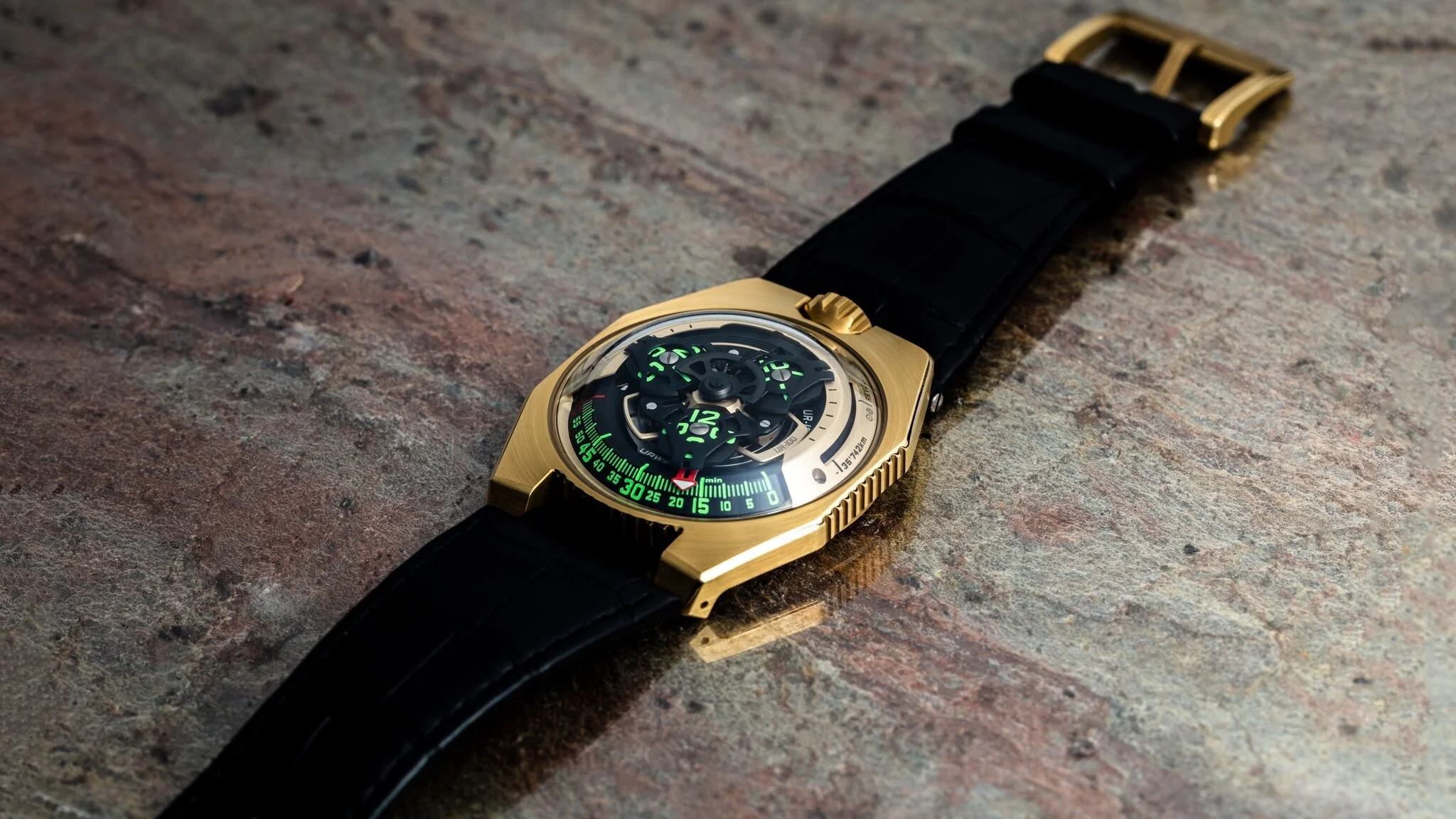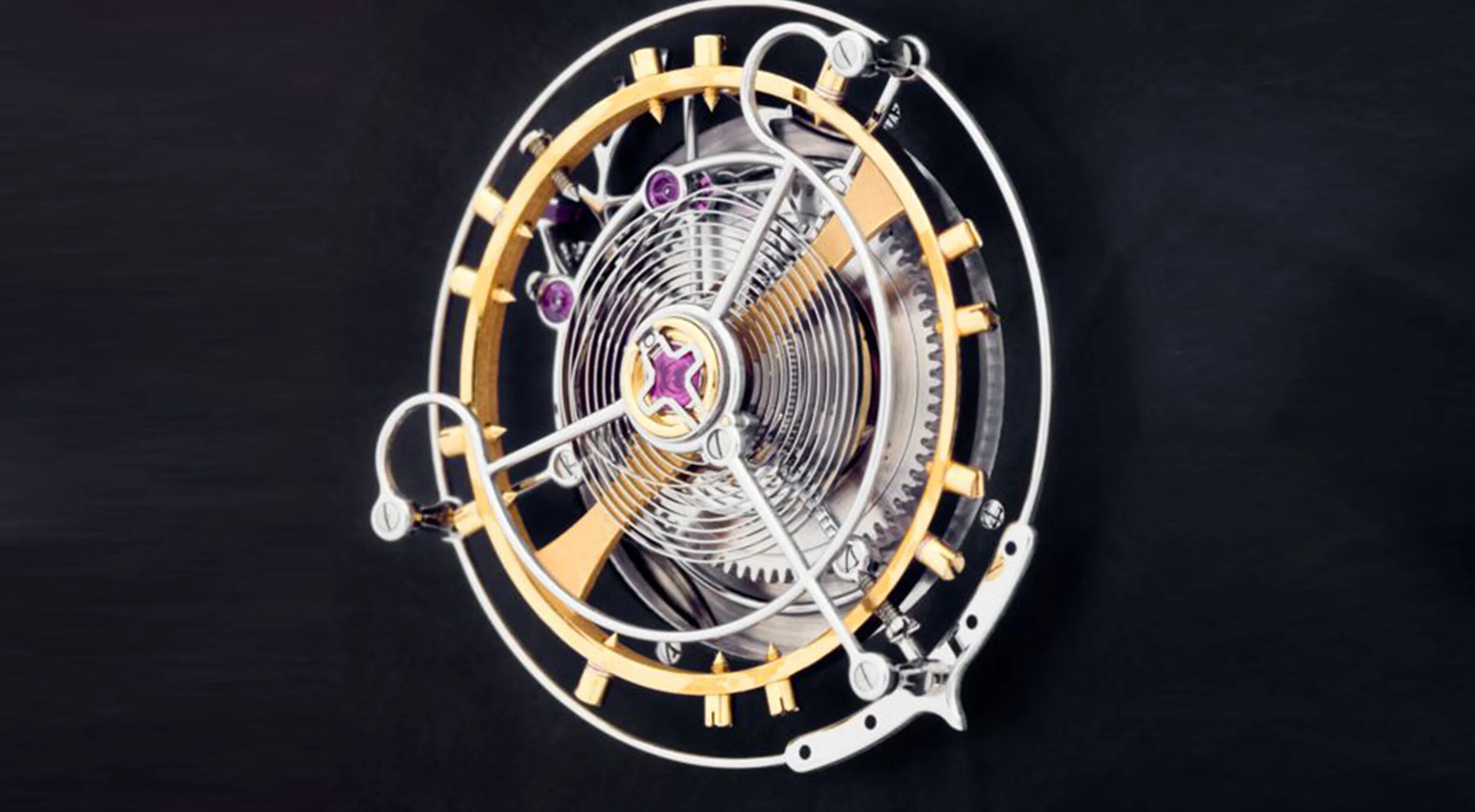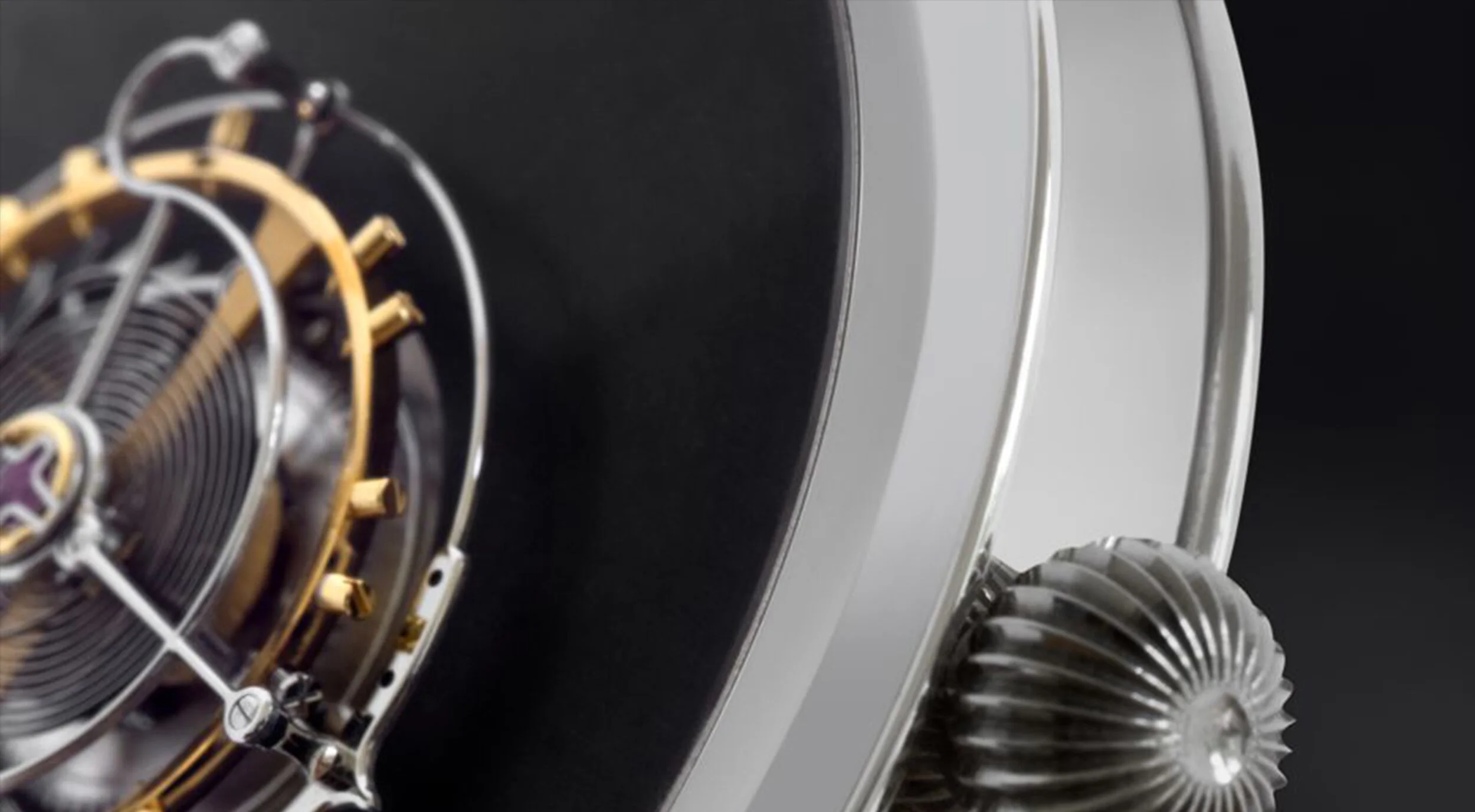Beyond Complications and Finishing: Conceptual Art in Horology
The most common way of assessing the artistic value of a watch is through its craftsmanship. Collections like Vacheron Constantin's Métiers d'Art or Patek Philippe's Rare Handicrafts are prime examples, through their use of techniques like enameling, lacquering, and cloisonné, to name a few. But beyond craftsmanship and technique, there is another way to think of art. Art can also operate on a more conceptual level, judged by its ability to make us think and see things differently. Conceptual timepieces are more rare than the craftsmanship-oriented category of art, but can be just as valuable and worthy of our attention.
So, what does conceptual horology even look like? Let's take a look at three examples.
Ludovic Ballouard’s Upside Down
Launched almost a decade ago, the Upside Down's striking design is a clear attempt at a more conceptual timepiece. While minutes and seconds are indicated with conventional hands, the hour indicator is shown by the only right side up numeral on the dial. This display of time makes looking into both the future and past laborious, forcing the owner to see, and by extension live, only within the present.
The Upside down blue dial with applied white gold numerals. (Image Credits: Ludovic Ballouard)
According to Ballouard, the inspiration for the Upside Down was the 2007-08 global financial crisis. In the height of the crisis, Ballouard wanted to simplify "time" amidst all the chaos and uncertainty. There's a paradox at play here: by obscuring the past and future, Ballouard makes the present moment easier to understand. To many readers now, this desire for simplicity finds new relevance and meaning in the current pandemic.
Left Image: Watchmaker Ludovic Ballouard - Right Image: Upside white dial with dark blue numerals.
Between the Upside Down and the Half Time, Ballouard's entire corpus of work centers on this theme: all we have is the present.
Urwerk UR-100 SpaceTime
Space-age aesthetics have always been the backbone of Urwerk's design language. But it wasn't until the UR-100 that the brand introduced its first astronomical indicators. Placed at 10 and 2 o'clock, the two indicators showcase the distance earth has traversed on its axis (555km) and around the sun (35,740km) over a 20 minute interval. Indicators alone might seem like a low bar to qualify as conceptual horology, but both create a special effect: it's a reminder that time is nothing more than rotations, spinning in space. It's a reminder of our place within the greater cosmos. Through a scientific lens, Urwerk brings a mystical energy to timekeeping.
Urwerk UR-100 C3PO
As is standard on most watches, there is only the time shown and the wearer. Time, as it's understood and experienced, is therefore often personal and individual. But these two little indicators force the owner out of the silo of individuality to read and experience time through the motion of the earth. Time is no longer only the 20 minutes left before the next Zoom call, it's that and the 35,740km we'll all collectively travel around the sun.
Haldimann H8 Flying Sculptura
Among these three examples, the Haldimann H8 Flying Sculptura is certainly the most controversial. And that's because it might not be a watch at all. Coined a "sculpture" by Beat Haldimann himself, the H8 consists of all the parts of a magnificently crafted tourbillon timepiece, except for one part. The hands. Yes, that is correct – you cannot tell the time with this "watch".
(Image Source: Haldimann Horology)
Watch collectors and enthusiasts generally love to scrutinize and discuss the technical excellence of timepieces. From movement construction and complications, to case shape and lugs, every detail is an object of acclaim. Yet, in the case of the H8, the absence of hands centers the entirety of the dialogue on the practical time-telling nature of an otherwise impractical watch. As if Haldimann is asking collectors and enthusiasts, "all you focused on was the the micro-mechanical sophistication and beauty, but now you want to talk about practicality?" Haldimann modified the case and deepened the bezel to display the tourbillon in its full glory, further reinforcing the irony.
This is conceptual horology at the limits of horology itself, questioning the boundaries of horology and how it should be judged and enjoyed. Confronting the art form itself is a hallmark of a master artist, comfortable with their craft. And Haldimann rises to that status with the H8.
(Image Source: Haldimann Horology)
Each of these three watches demonstrates how horology has the ability to engage on a conceptual level in the same way conventional art can. They can challenge us to question our relationship with timepieces and time itself. In Ballouard's Upside Down, it's about appreciating the present and living in the moment. Urwerk's UR-100 is a reminder of human's experience of time within the wider cosmos. And finally, Haldimann tests the comfort zone of horology to reveal contradictions in how we appreciate timepieces.
We don't often associate watches with profound expression. But what's more profound than time and humanity's experience of its passing?
ABOUT THE AUTHOR
Mike is a horology enthusiast and collector of independent watches. He is the publisher and editor of The Open Caseback, a blog and Instagram page for watch collectors to engage and discuss unconventional topics in the watch industry.





